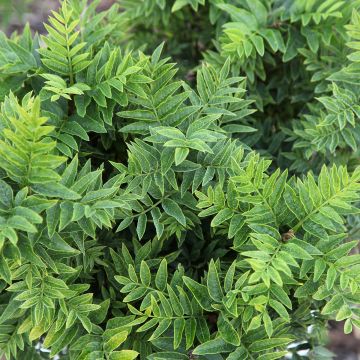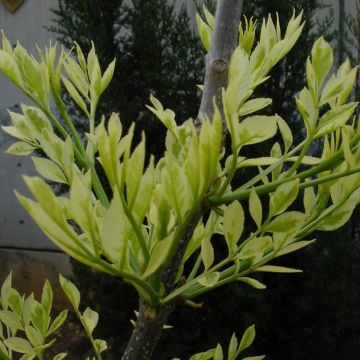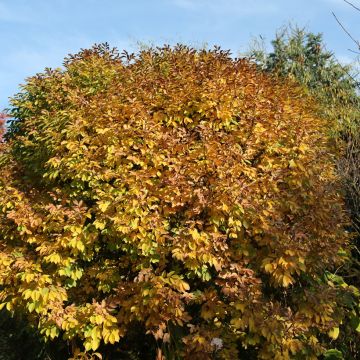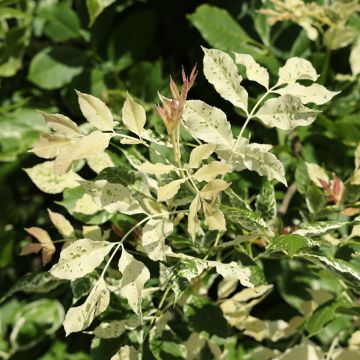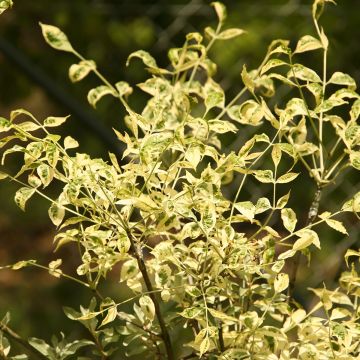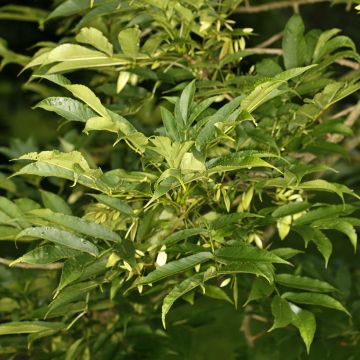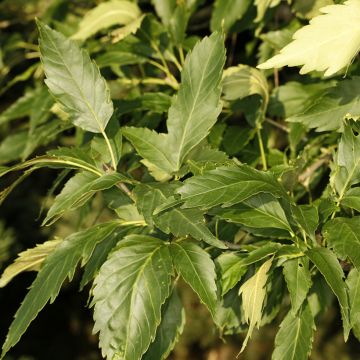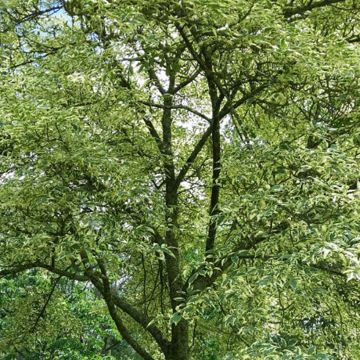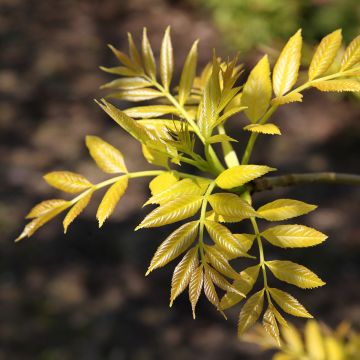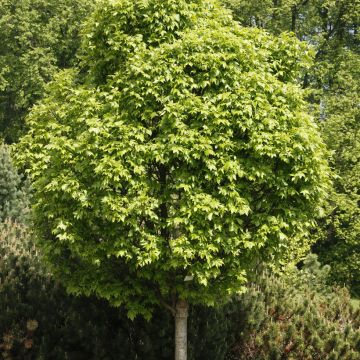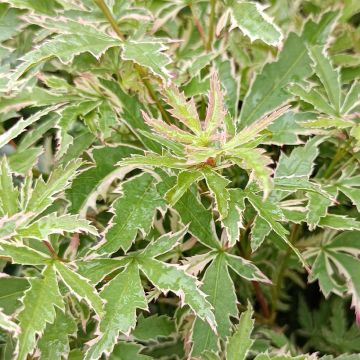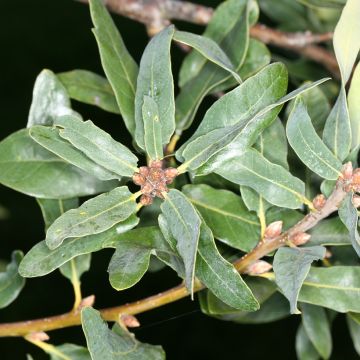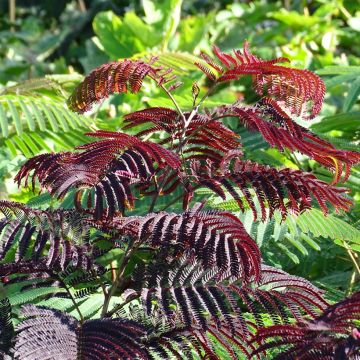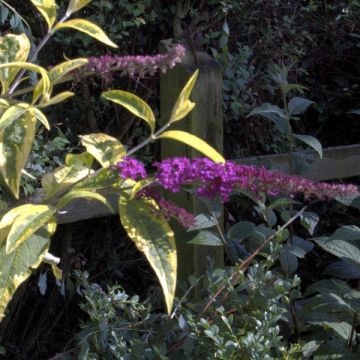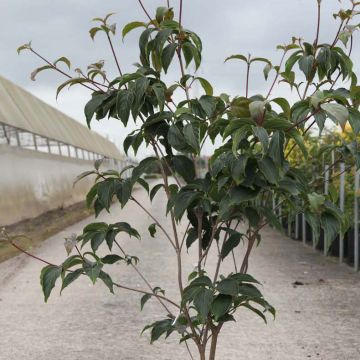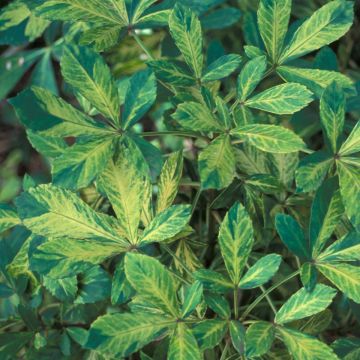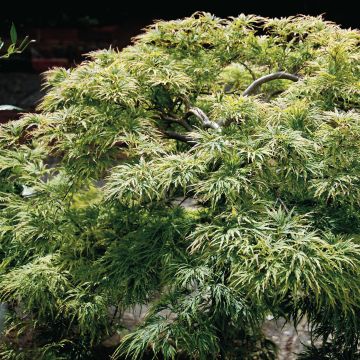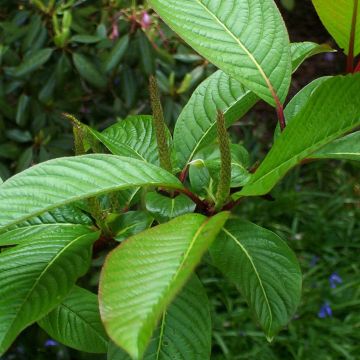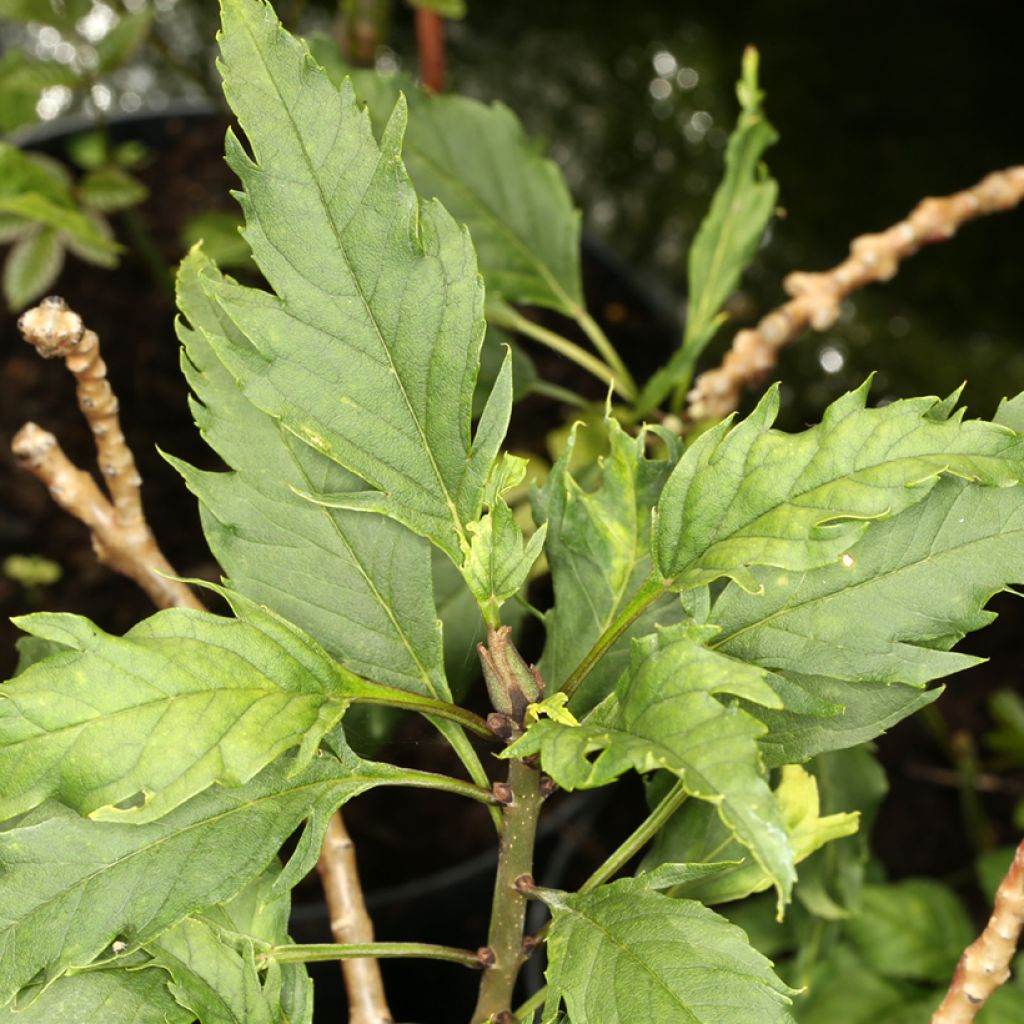

Fraxinus angustifolia Heterophylla Laciniata - Narrow-leaved ash
Fraxinus angustifolia Heterophylla Laciniata - Narrow-leaved ash
Fraxinus angustifolia Heterophylla Laciniata
Narrow-leaved ash
This plant carries a 24 months recovery warranty
More information
We guarantee the quality of our plants for a full growing cycle, and will replace at our expense any plant that fails to recover under normal climatic and planting conditions.
Oversize package: home delivery by special carrier from €6.90 per order..
Express home delivery from €8.90.
Delivery to Corse prohibited: UE law prohibits the import of this plant from mainland France to Corse as part of the fight against Xylella fastidiosa. Please accept our sincere apologies.
More information
Does this plant fit my garden?
Set up your Plantfit profile →
Description
Fraxinus angustifolia 'Heterophylla Laciniata' is a very rare form of the Narrow-Leaved Ash that is characterised by its elegant, fine-textured foliage. Its lobed, narrow and wavy leaves are a shiny dark green during the growing season and take on beautiful autumnal hues, ranging from yellow to orange and red. Over time, this tree develops a very upright trunk supporting a light and rounded crown that provides shade in the summer. In its natural form, it makes a statement in the landscape until autumn. Give it an open location and deep, not too dry soil in summer.
Fraxinus angustifolia 'Heterophylla Laciniata' is a tree from the olive family, just like the olive tree and lilac. The species, Narrow-Leaved Ash, is native to southern Europe, where it is common along riverbanks and shores.
This 'Heterophylla Laciniata' ash develops a vertical and fairly short, clear trunk, topped by a rounded crown, rather closed when the tree is young, opening up a bit as the years go by. At maturity, the canopy is airy, with a light appearance, and the bark covering the trunk becomes grey, deeply fissured and scaly. Eventually, this tree will reach a height of 8 to 10 m, with a crown measuring about 5 to 6 m in width. The deciduous foliage is very delicate and consists of leaves composed of 3 to 11 very narrow and lanceolate leaflets, more or less lobed and wavy, measuring 5 to 10 cm in length. They are light green in spring and darken in summer. In autumn, they display beautiful shades of yellow, orange, red, and purple for 3 to 5 weeks, unless they are blown away by strong winds. The flowering occurs in spring, before the leaves appear, in the form of panicles ranging from greenish-yellow to reddish. After pollination, they give way to samaras measuring 2 to 4.5 cm in length.
Fraxinus angustifolia 'Heterophylla Laciniata' is a small tree that is highly ornamental and accommodating, suitable for cultivation in most regions. It will find a place as a standalone specimen in medium to large gardens. It provides pleasant shade in the summer and takes part in the autumn colour festival. Cyclamens or clusters of daffodils can be planted at its base, as well as some ground cover perennials for dry shade, which are decorative in summer.
Report an error about the product description
Plant habit
Flowering
Foliage
Safety measures
Botanical data
Fraxinus
angustifolia
Heterophylla Laciniata
Oleaceae
Narrow-leaved ash
Cultivar or hybrid
atteinterespiratoire
Cette plante peut entraîner des symptômes allergiques.
Evitez de la planter si vous ou vos proches souffrez de rhinite saisonnière ("rhume des foins").
Davantage d'informations sur https://plantes-risque.info
Other Fraxinus - Ash tree
Planting and care
Plant your Fraxinus angustifolia 'Heterophylla Laciniata' in autumn or spring, choose a clear location, preferably in full sun, where the soil is deep and keep in mind the space it will take up in the long term. If necessary, create a drainage pit with stones if your soil is very clayey and suffocating. If your soil is poor, a generous addition of leaf compost will be beneficial. Maintain regular watering during the summer following planting and be careful to protect it from prolonged droughts for another year, mulching can help keep the base moist and reduce the need for watering. It is important to keep in mind that this riverside tree needs consistently moist soil, at least at depth. It is perfectly frost resistant. Prune approximately every 3 years to balance the habit of the tree by opening up the centre of the canopy.
Planting period
Intended location
Care
This item has not been reviewed yet - be the first to leave a review about it.
Striking foliage shrubs
Haven't found what you were looking for?
Hardiness is the lowest winter temperature a plant can endure without suffering serious damage or even dying. However, hardiness is affected by location (a sheltered area, such as a patio), protection (winter cover) and soil type (hardiness is improved by well-drained soil).

Photo Sharing Terms & Conditions
In order to encourage gardeners to interact and share their experiences, Promesse de fleurs offers various media enabling content to be uploaded onto its Site - in particular via the ‘Photo sharing’ module.
The User agrees to refrain from:
- Posting any content that is illegal, prejudicial, insulting, racist, inciteful to hatred, revisionist, contrary to public decency, that infringes on privacy or on the privacy rights of third parties, in particular the publicity rights of persons and goods, intellectual property rights, or the right to privacy.
- Submitting content on behalf of a third party;
- Impersonate the identity of a third party and/or publish any personal information about a third party;
In general, the User undertakes to refrain from any unethical behaviour.
All Content (in particular text, comments, files, images, photos, videos, creative works, etc.), which may be subject to property or intellectual property rights, image or other private rights, shall remain the property of the User, subject to the limited rights granted by the terms of the licence granted by Promesse de fleurs as stated below. Users are at liberty to publish or not to publish such Content on the Site, notably via the ‘Photo Sharing’ facility, and accept that this Content shall be made public and freely accessible, notably on the Internet.
Users further acknowledge, undertake to have ,and guarantee that they hold all necessary rights and permissions to publish such material on the Site, in particular with regard to the legislation in force pertaining to any privacy, property, intellectual property, image, or contractual rights, or rights of any other nature. By publishing such Content on the Site, Users acknowledge accepting full liability as publishers of the Content within the meaning of the law, and grant Promesse de fleurs, free of charge, an inclusive, worldwide licence for the said Content for the entire duration of its publication, including all reproduction, representation, up/downloading, displaying, performing, transmission, and storage rights.
Users also grant permission for their name to be linked to the Content and accept that this link may not always be made available.
By engaging in posting material, Users consent to their Content becoming automatically accessible on the Internet, in particular on other sites and/or blogs and/or web pages of the Promesse de fleurs site, including in particular social pages and the Promesse de fleurs catalogue.
Users may secure the removal of entrusted content free of charge by issuing a simple request via our contact form.
The flowering period indicated on our website applies to countries and regions located in USDA zone 8 (France, the United Kingdom, Ireland, the Netherlands, etc.)
It will vary according to where you live:
- In zones 9 to 10 (Italy, Spain, Greece, etc.), flowering will occur about 2 to 4 weeks earlier.
- In zones 6 to 7 (Germany, Poland, Slovenia, and lower mountainous regions), flowering will be delayed by 2 to 3 weeks.
- In zone 5 (Central Europe, Scandinavia), blooming will be delayed by 3 to 5 weeks.
In temperate climates, pruning of spring-flowering shrubs (forsythia, spireas, etc.) should be done just after flowering.
Pruning of summer-flowering shrubs (Indian Lilac, Perovskia, etc.) can be done in winter or spring.
In cold regions as well as with frost-sensitive plants, avoid pruning too early when severe frosts may still occur.
The planting period indicated on our website applies to countries and regions located in USDA zone 8 (France, United Kingdom, Ireland, Netherlands).
It will vary according to where you live:
- In Mediterranean zones (Marseille, Madrid, Milan, etc.), autumn and winter are the best planting periods.
- In continental zones (Strasbourg, Munich, Vienna, etc.), delay planting by 2 to 3 weeks in spring and bring it forward by 2 to 4 weeks in autumn.
- In mountainous regions (the Alps, Pyrenees, Carpathians, etc.), it is best to plant in late spring (May-June) or late summer (August-September).
The harvesting period indicated on our website applies to countries and regions in USDA zone 8 (France, England, Ireland, the Netherlands).
In colder areas (Scandinavia, Poland, Austria...) fruit and vegetable harvests are likely to be delayed by 3-4 weeks.
In warmer areas (Italy, Spain, Greece, etc.), harvesting will probably take place earlier, depending on weather conditions.
The sowing periods indicated on our website apply to countries and regions within USDA Zone 8 (France, UK, Ireland, Netherlands).
In colder areas (Scandinavia, Poland, Austria...), delay any outdoor sowing by 3-4 weeks, or sow under glass.
In warmer climes (Italy, Spain, Greece, etc.), bring outdoor sowing forward by a few weeks.

































